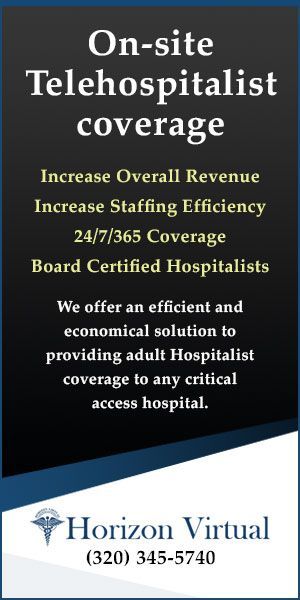December 2023
VOLUME XXXVII, NUMBER 9
December 2023, VOLUME XXXVII, NUMBER 9
Capsules
Southside Community Health Announces New 30,000-Square-Foot Facility
Minneapolis-based Southside Community Health Services recently announced it has received a $2.6 million gift to help finance a new health center in the city’s Phillips neighborhood. The gift came from philanthropist MacKenzie Scott the writer and former wife of the Amazon founder Jeff Bezos. Her organization Yield Giving has given a total of around $16.5 billion to nonprofits around the country. The new 30,000-square-foot facility, dubbed One Southside and located at 1000 E Lake St., will offer medical, dental, vision and behavioral health care.
Southside Community Health Services is a primary care clinic in south Minneapolis, providing health care to an underserved community. Most of its patients have public health care or are uninsured. “MacKenzie Scott’s investment will help us grow from serving 11,000 people per year to more than 18,000,” said Ann Cazaban, executive director of Southside. “Locating these much-needed services under one roof will alleviate barriers for families and provide a trusted place where they can get the high-quality care they deserve. We are deeply grateful for MacKenzie Scott’s investment in our vision.” The current clinic is operating in leased space in an elementary school building that the organization outgrew years ago. “We’re making do,” Cazaban said. “It’s a space that was never designed to be a clinic, so we’ve kind of pieced together and done the best with what we had.” Speaking of the new location she added, “It’s the perfect spot. It’s on major transit lines. The visibility is going to be much greater. We’re building something with a lot of intention, looking at the patients’ experience when they walk in.” The donation came as a surprise. Southside didn’t apply for the funding or reach out to Scott’s foundation — instead, the foundation called Southside and told Cazaban that the clinic had been selected for the gift. Southside’s new clinic will cost about $30 million. The organization has secured several other grants for the project and plans to seek more funding from the state Legislature next year. Southside plans to break ground on the new facility next year and open it to patients in the summer of 2025.
MMA and MHA Launch Serious Illness Conversation Initiative
The Minnesota Medical Association (MMA) and Minnesota Hospital Association (MHA) recently announced the launch of the Center for Advancing Serious Illness Communication (CASIC). This joint initiative will soon offer its first series of on-demand training to introduce health care providers and other members of care teams to serious illness conversations (SIC). CASIC, which is sponsored by Blue Cross and Blue Shield of Minnesota, is focused on:
- Creating a dedicated statewide community standard on how to address SIC, with a focus on training, implementation and workflow processes;
- Encouraging consistent and higher usage of SIC by providers; and helping normalize the practice across all health care organizations to the benefit of patients, their families and clinicians.
The three-module introductory training series begins the process of preparing clinicians and health care organizations to engage every patient experiencing a serious illness in meaningful discussions about their diagnosis, prognosis and care choices. It focuses on the Serious Illness Communication Guide, an evidence-based tool developed by Ariadne Labs, which is a joint center for health systems innovation at Brigham and Women’s Hospital and the Harvard T.H. Chan School of Public Health. “We’re excited to be launching this important training,” said Janet Silversmith, MMA CEO. “Patients deserve compassionate and reliable support from their clinical team in understanding their prognosis and in prospectively defining the care that they do and don’t want to receive. This program seeks to make those conversations the rule, rather than the exception.” The free training is available to all members of care teams who work with patients with serious illnesses. The modules are taken in sequence, as each subsequent module builds on the knowledge gained in previous modules. They can be accessed on the CASIC website. These modules are CME-eligible for physicians. Other health professionals who participate in this CME activity may submit their Statement of Attendance to their appropriate accrediting organizations or state boards for consideration of credit. They will be a prerequisite for more extensive virtual classroom training launching in early 2024, which will focus on learning how to conduct these conversations effectively and with confidence, using role-playing techniques, as well as how to incorporate them into day-to-day workflows.
Hennepin Healthcare Receives $9.7 Million to Improve Behavioral Health Care
The Substance Abuse and Mental Health Services Administration (SAMHSA) is an agency within the U.S. Department of Health and Human Services that leads public health efforts to advance the behavioral health of the nation. The Minnesota Department of Human Services (MN DHS) recently received a SAMHSA grant and provided Hennepin Healthcare with a $9.7 million sub-award. These funds will be used to integrate behavioral health care resources in Hennepin Healthcare primary care clinics. Tyler Winkelman, MD, division director of general internal medicine at Hennepin Healthcare, will oversee the project, which will implement the Collaborative Care model within five primary care clinics at Hennepin Healthcare. DHS is working exclusively with Hennepin Healthcare on this initiative. The model has been shown to improve the quality of mental health and substance use disorder care within primary care. The grant funds several new and current positions to implement the Collaborative Care model within five primary care clinics at Hennepin Healthcare. The project will make behavioral health care services more accessible through primary care and address health disparities. “Instead of a patient working only with their primary care provider for their behavioral health, this care model links patients directly to a behavioral health clinician who provides counseling services, frequent check-ins and provides support from a consulting psychiatrist,” Dr. Winkelman explains. He added, “Having these resources to meet patients where they are demonstrates the commitment at Hennepin Healthcare to deliver exceptional care in primary care, as well as the commitment from SAMHSA and MN DHS to improve behavioral health care.” Dr. Nathan Chomilo, MN DHS Medicaid medical director, said, “Our team is thrilled to help advance integration of behavioral and physical health in Minnesota. This grant from SAMHSA, our partnership with Hennepin Healthcare and with the communities they serve, has the potential to bring us another step closer to creating community-led, integrated interventions that advance whole person health, address historical inequities in our health care system and improve the health and well-being of Minnesotans served by our state Medicaid program.” Dr. Winkleman noted that even though it is known that this model improves behavioral health outcomes, it is not widely implemented because of the complicated and expensive start-up needs. He said, “We can now support those start-up costs to build a sustainable program for the community we serve.”
MDH Receives $1.65 Million CDC Grant Funding Sickle Cell Research
The Minnesota Department of Health (MDH) was recently awarded a $1.65 million grant from the Centers for Disease Control and Prevention (CDC) to fund research that will provide better understanding of the impact of sickle cell disease. Sickle cell disease is one of the most common hereditary disorders in the U.S. and can lead to anemia, infections, multi-organ damage, stroke, a lifespan shortened by 20 years and excruciating pain. On average, every year in Minnesota, 22 babies are born with sickle cell disease and another 540 are born with sickle cell trait. People living with sickle cell disease reside throughout Minnesota and had at least 23,786 emergency department and hospital encounters from 2010 to 2021. According to the Minnesota commissioner of health, Dr. Brooke Cunningham, the new federal funding will help public health officials better understand ways to align available care services with those who have sickle cell disease. “In Minnesota, the data collection program will help us better understand where people with sickle cell live and where health care providers and resources are located so people receive the best services,” said Cunningham. MDH is partnering with the Sickle Cell Foundation of Minnesota and health care systems across the state as part of the National Sickle Cell Data Collection Program. “Access to comprehensive, high-quality health care for those with sickle cell disease would improve health outcomes and lower hospitalization rates,” said Rae Blaylark, president and CEO of Sickle Cell Foundation of Minnesota. “Together, Minnesotans can improve the care and lives of every baby born with sickle cell disease and all Minnesotans currently living with sickle cell disease.” Anyone can be born with sickle cell disease or sickle cell trait although nationally and in Minnesota, sickle cell disease is most common among African Americans. In Minnesota, about 70% of Minnesota babies born with the trait are African American or of African descent. Despite being the most common genetic disorder in the United States, compared with other genetic disorders that affect predominantly white people, sickle cell receives significantly less attention and funding for education, outreach, health care services and research to develop new treatments.
Learn more at MDH Sickle Cell Disease or the Sickle Cell Foundation of Minnesota.
Mayo Opens New Rochester Research Center
The Mayo Clinic recently celebrated the grand opening of the 11-floor Anna-Maria and Stephen Kellen Building. The space-age design new building features 176,000 square feet and subway connectors to other Mayo Clinic buildings. It will support hiring more scientists to contribute to Mayo’s unique capabilities to bring scientific discoveries to patients. It joins other Mayo Clinic research facilities where investigators discover scientific advancements that affect patient care, leading to better outcomes and improved quality of life in Minnesota and beyond. Construction began in June 2021 with a lead gift from the Anna-Maria and Stephen Kellen Foundation. It features flexible facilities for basic and translational research to address serious and complex conditions, with a focus on discoveries in neurosciences and cancer research. The research floors include open collaborative areas and lab space. “Our journey to disrupt and revolutionize how we discover treatments and cures and how we deliver health care and hope to patients is well underway. We have designed the building to adapt to the evolving needs of Mayo Clinic’s patients and foster collaboration,” says Gregory Gores, MD, Kinney executive dean of research, Mayo Clinic. “Through team science, researchers will discover scientific breakthroughs via advancements in areas such as artificial intelligence and clinical trials so cures can reach more people outside our walls.” The stunning new facility has a glass exterior consisting of 979 panels covering 60,000 square feet of one-inch insulated glass. Each panel weighs over 600 pounds and is made of material completely sourced from the U.S. It was designed and constructed to use 30% less energy than comparable buildings. The external scrim structure, featuring 334 steel support beams, reduces solar heat gain and contributes to energy reduction. “Mayo Clinic’s vision for health care transformation demands relentless pursuit of innovations that lead to new cures.” says Gianrico Farrugia, MD, president and CEO of Mayo Clinic. “Through thoughtful team-oriented facilities such as the Kellen Building, our researchers and clinicians will find more ways to detect and eradicate disease earlier, faster and more efficiently.”
Sanford Expands Remote Patient Services
Sanford Health has recently expanded its program to help patients with chronic conditions stay in contact with their care team leaders. Sanford CareSignal is a free service that lets patients self-report symptoms via a phone call or by text message. There is no device to buy or app to download. Among other conditions, the new service can help monitor:
- Chronic obstructive pulmonary disease (COPD)
- Depression
- Type 2 diabetes
- Heart failure
- Recovery after discharge from the hospital or emergency department
Remote patient monitoring grew during the COVID-19 pandemic and led to finding new ways of making communication with patients more convenient. In the past year participating Sanford Health locations have seen fewer emergency department visits and fewer in-patient visits that fall outside regularly scheduled appointments. Regular patient communication can help make quicker interventions and lead to fewer health complications and lower the overall cost of care. “Offering more frequent connections between scheduled primary care visits increases patients’ confidence in self-management of their condition,” said Lindsay Daniels, Sanford Health system executive director for care management. “It can initiate quicker care team responses related to worsening symptoms.” It can also reduce transportation issues for those whose access to care is challenging. Participating in the Sanford CareSignal takes up just a few minutes each week. Participants can choose a time to be contacted. “Patients are becoming more engaged in their own care,” said Andrew Larson, Sanford Health director of operations, primary care. “They can send us real-time information via our CareSignal platform that immediately goes back to trained staff who know how to interpret that information and can take action.” Daniels added, “The possibilities for different ways for us to connect with patients are seemingly endless. This is not the traditional way — this is not scheduling appointments and making them come to us. This is truly providing care where the patient is and where they want to receive care. I think it’s just the beginning of what we’ll be able to do to connect with patients between visits to help them lead healthier lives.”
MORE STORIES IN THIS ISSUE
cover story one
The Minnesota RETAIN Study: Chiropractic care in return to work issues
By Deb Zurcher, LAc, DC
cover story two
Safeguarding Men’s Health: The role of sperm counts
By Christopher De Jonge, PhD, HCLD(ABB)
capsules
Top news, physician appointments and recognitions
Interview
Patient-centered Home Care
Susan Morgan, chief operating officer, Accra
Minnesota health care roundtable
Digital Transformation in Health Care: Passing the torch
AUGUST 2024
cover story
Assessing and Advancing Community Health: The overarching value of equity
BY Brooke Cunningham, MD, PhD
CONTACT
(612) 728-8600 | comments@mppub.com
758 Riverview Ave | St. Paul MN 55107
© Minnesota Physician Publishing · All Rights Reserved. 2023
quick links
We welcome the submission of manuscripts and letters for possible publication. All views and opinions expressed by authors of published articles are solely those of the authors and do not necessarily express those of Minnesota Physician Publishing Inc., or this publication. The contents herein are believed to be accurate but are not intended to replace medical, legal, tax, business or other professional advice or counsel. No part of this publication may be reprinted or reproduced without written permission from our publisher.
















